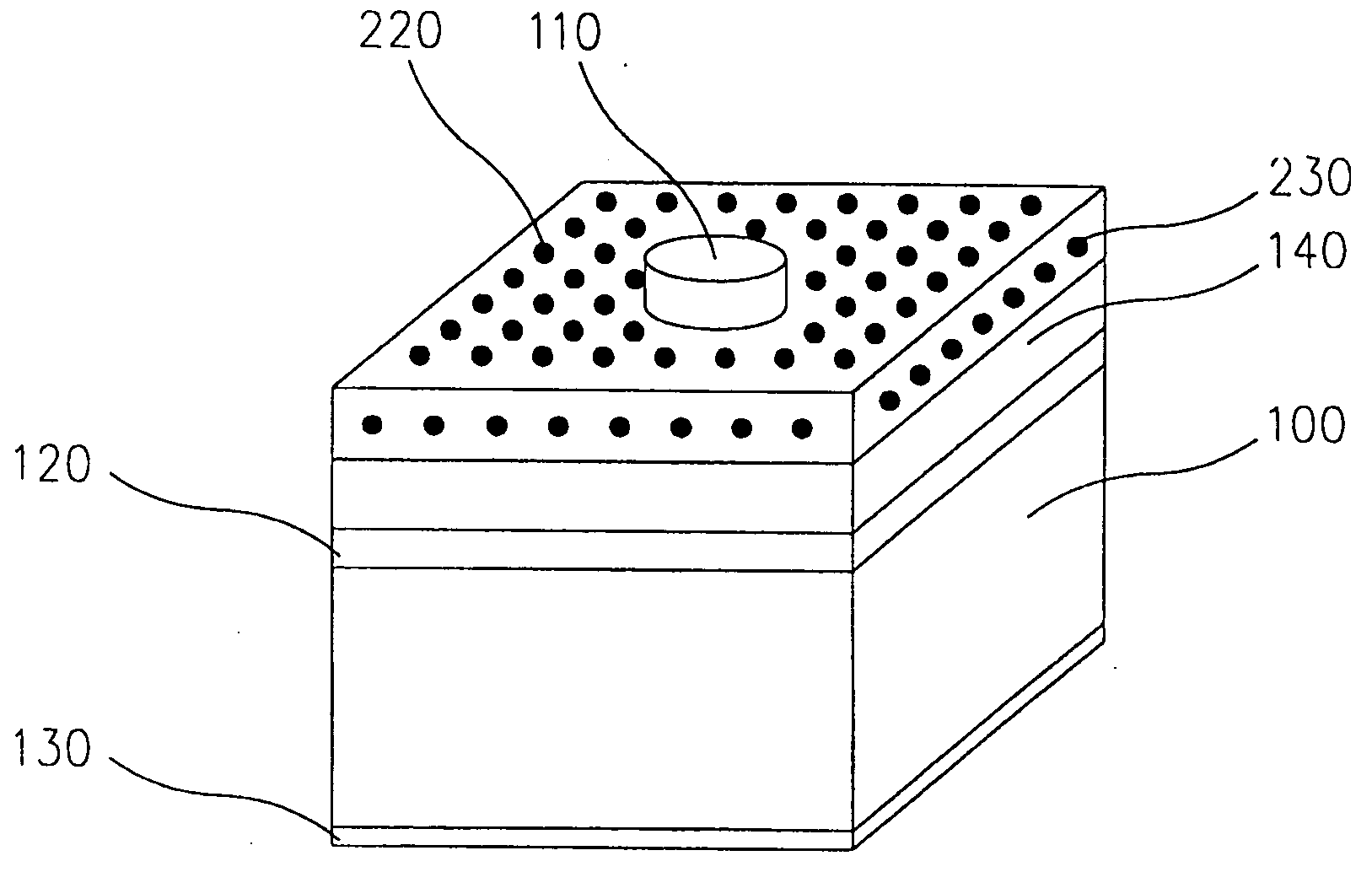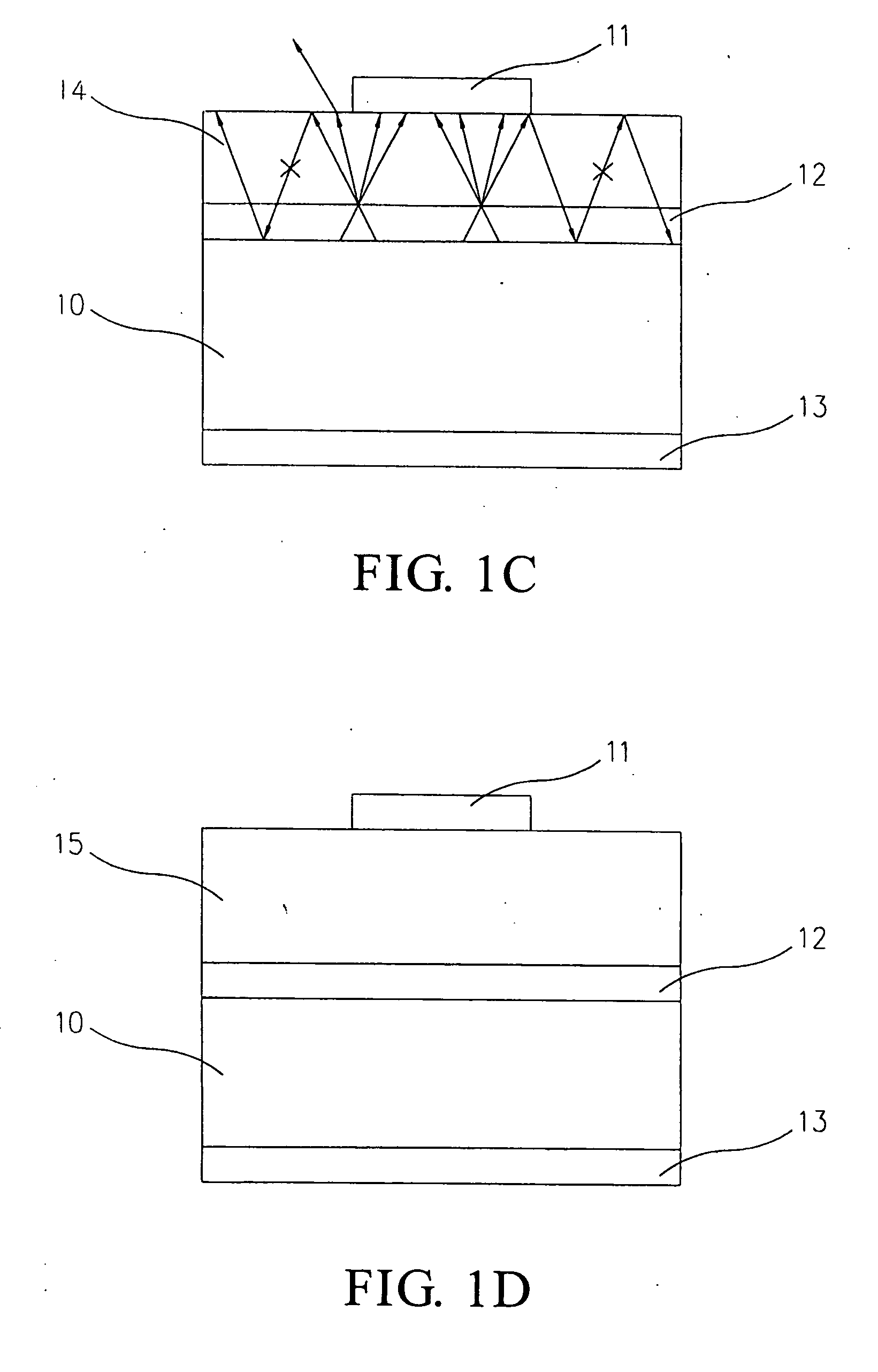Light-emitting semiconductor device having enhanced brightness
a semiconductor and light-emitting technology, applied in the direction of semiconductor devices, basic electric elements, electrical apparatus, etc., can solve the problems of increasing the time and cost required for movpe epitaxy, poor electric conductivity of algainp or algainn, and significantly increasing the cost of epitaxy, so as to enhance light-emitting efficiency, enhance brightness, and enhance brightness
- Summary
- Abstract
- Description
- Claims
- Application Information
AI Technical Summary
Benefits of technology
Problems solved by technology
Method used
Image
Examples
example i
[0031] In Example I, a light emitting diodes (LED) is used to describe the features of this invention. FIG. 2A is a cross-sectional view of a light emitting diode. First, an active layer 120 is formed above a substrate 100. The active layer may be of a double-heterostructure or a quantum well structure to enhance the light-emitting efficiency of the diode. Then, a capping layer 140 made of GaP, AlGaAs or ITO is then added above the active layer to increase the current distribution. A back contact 130 is located on another side of the substrate 100, and a front contact 210 is located above the capping layer 140.
[0032] In detail, the material of the substrate 100 is dependent on the material of the active layer 120. When the active layer 120 is made of AlGaInP, GaAs is selected to form the substrate. When the active layer 120 is made of AlGaInN. Any of sapphire, SiC, MgAlO4, ZnO, LiG2O2 and LiAlO2 may be selected to form the substrate. The active layer is preferred to be in the range...
example ii
[0042] Example II discloses a further light emitting diodes (LED) to describe the features of this invention. FIG. 2D is a cross-sectional view of a light emitting diode, having a back contact, a substrate, an active layer and a capping layer that have the same structures as those in Example I. According to this invention, the substrate may a semiconductor substrate or any other appropriate substrates dependent on the applications of the LED.
[0043] Example II is characterized by a front contact that is divided into two layers, as shown in FIG. 2E. The metallic bonding pad—a first layer 110 of the front contact, is the same as that adopted in the conventional light emitting diodes. The contact is located at a center of the diode to serve as the media for communicating and contacting the exterior. A second layer 220 of the front contact is located below the first layer 110 and embedded in an ITO layer 230. The second layer 220 of the front contact includes a metallic pattern having a...
PUM
 Login to View More
Login to View More Abstract
Description
Claims
Application Information
 Login to View More
Login to View More - R&D
- Intellectual Property
- Life Sciences
- Materials
- Tech Scout
- Unparalleled Data Quality
- Higher Quality Content
- 60% Fewer Hallucinations
Browse by: Latest US Patents, China's latest patents, Technical Efficacy Thesaurus, Application Domain, Technology Topic, Popular Technical Reports.
© 2025 PatSnap. All rights reserved.Legal|Privacy policy|Modern Slavery Act Transparency Statement|Sitemap|About US| Contact US: help@patsnap.com



